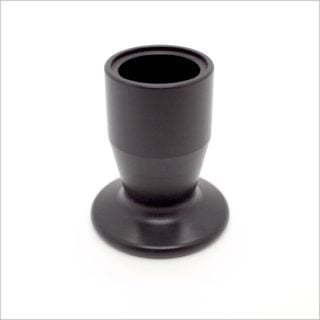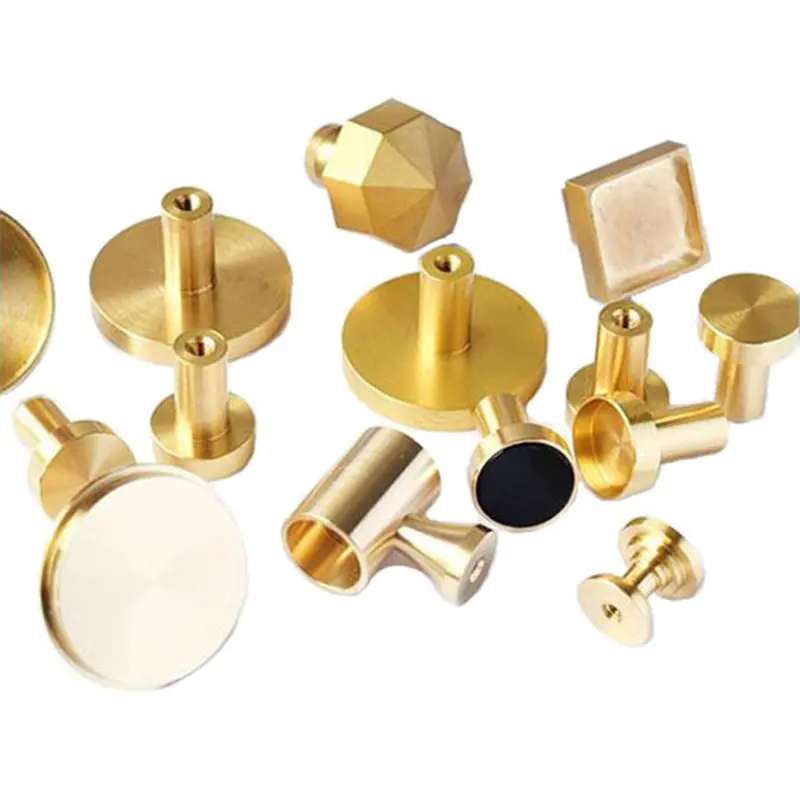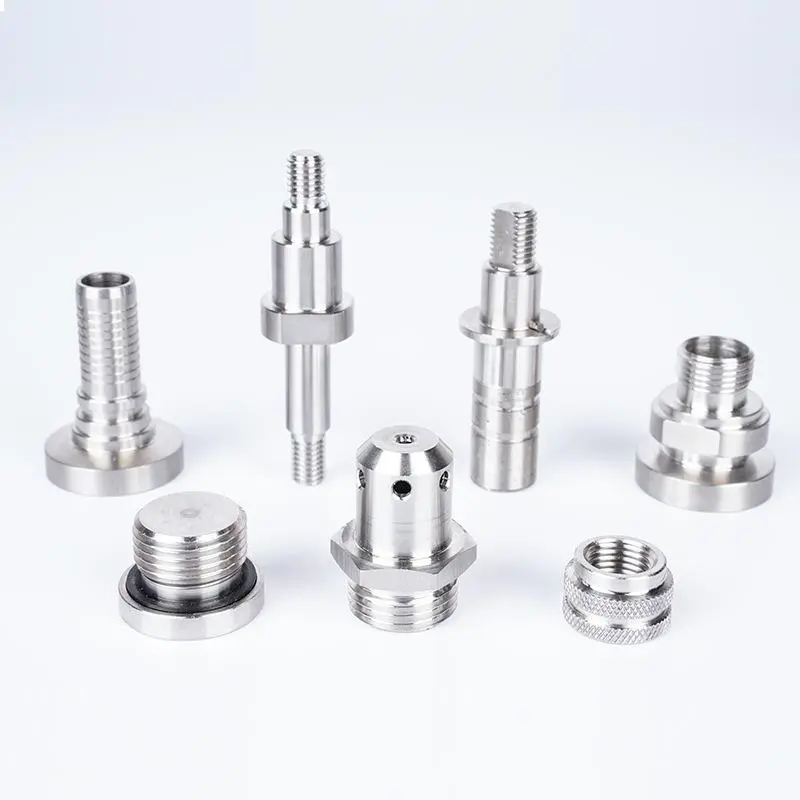Why CNC Swiss Aluminum Machined Parts Are Revolutionizing Manufacturing
Published Time:
2025-08-25
Why CNC Swiss Aluminum Machined Parts Are Revolutionizing Manufacturing
In today’s fast-paced manufacturing landscape, the demand for precision, efficiency, and adaptability is at an all-time high. As industries evolve, so do the technologies that drive them. One such innovation that has gained significant traction is the use of CNC Swiss aluminum machined parts. This article will delve into how these parts are revolutionizing manufacturing, enhancing productivity, and setting new standards in quality and design.
Introduction to CNC Swiss Machining
CNC Swiss machining is a highly sophisticated manufacturing technique that utilizes computer numerical control (CNC) technology to produce intricate parts with remarkable precision. Originating from the Swiss watch-making industry, this method is designed for turning parts with complex geometries. The process allows for the simultaneous machining of multiple features, which significantly enhances efficiency and reduces production time.
The Advantages of CNC Swiss Aluminum Machined Parts
The benefits of using CNC Swiss aluminum machined parts are numerous and impactful:
1. Unmatched Precision and Accuracy
One of the most significant advantages of CNC Swiss machining is its ability to produce parts with tolerances as tight as ±0.0005 inches. This level of precision is crucial in industries where even the slightest deviation can lead to significant issues, such as aerospace and medical device manufacturing.
2. Enhanced Production Efficiency
CNC Swiss machines are designed for high-speed production, enabling manufacturers to create parts quickly without sacrificing quality. The process allows for automated operations, which minimizes manual intervention and reduces the likelihood of errors. Consequently, manufacturers can achieve faster turnaround times, meeting tight project deadlines and increasing overall productivity.
3. Versatility in Design
With the capability to handle both simple and complex geometries, CNC Swiss machining opens up a world of possibilities for product design. Whether it’s tiny components for electronic devices or larger assemblies for automotive applications, manufacturers can easily adapt their designs to fit the precise requirements of their projects.
4. Cost-Effectiveness
While the initial investment in CNC Swiss technology may be higher than traditional methods, the long-term savings are significant. The reduction in material waste, lower labor costs due to automation, and decreased production times translate to a favorable return on investment.
Applications of CNC Swiss Aluminum Machined Parts
CNC Swiss aluminum machined parts are utilized across various industries, each benefiting from the unique properties of these components:
Aerospace Industry
In the aerospace sector, components must adhere to stringent safety and quality standards. CNC Swiss machined parts are ideal for creating lightweight and durable components, such as brackets and housings, that contribute to the overall efficiency of aircraft.
Medical Devices
The medical field demands precision and reliability, making CNC Swiss machined parts invaluable for producing surgical instruments, implants, and other critical components that require meticulous attention to detail.
Automotive Manufacturing
In automotive production, the need for lightweight materials is paramount. CNC Swiss aluminum machined parts provide manufacturers with the ability to create intricate designs that enhance vehicle performance while reducing weight, ultimately improving fuel efficiency.
Electronics and Telecommunications
As technology continues to advance, the electronics industry requires increasingly complex components. CNC Swiss machining allows for the production of small, detailed parts that are essential in devices such as smartphones, computers, and telecommunications equipment.
CNC Swiss Machining vs. Traditional Machining
When comparing CNC Swiss machining to traditional machining methods, several key differences become apparent:
1. Machining Process
Traditional machining often involves multiple setups and tools to create complex parts, leading to longer production times. In contrast, CNC Swiss machining can perform multiple operations in a single setup, streamlining the process and improving efficiency.
2. Material Utilization
Because CNC Swiss machining minimizes waste through precise cutting, manufacturers can utilize materials more effectively. Traditional methods may lead to higher scrap rates, increasing costs and reducing overall efficiency.
3. Labor Requirements
CNC Swiss machining significantly reduces manual labor requirements due to its automated nature. This not only lowers labor costs but also decreases the potential for human error, enhancing overall product quality.
The Technology Behind CNC Swiss Machining
The technology behind CNC Swiss machining is continually evolving, with several advancements driving its efficiency and effectiveness:
1. Advanced Software
Modern CNC Swiss machines are equipped with sophisticated software that allows for precise programming and control. This enables manufacturers to create complex designs with ease, ensuring accuracy and repeatability.
2. High-Speed Spindles
High-speed spindles are crucial for achieving optimal performance in CNC Swiss machining. These spindles allow for faster cutting speeds, which enhance production rates and reduce overall machining time.
3. Multitasking Capabilities
Many CNC Swiss machines now feature multitasking capabilities, allowing for the simultaneous execution of turning, milling, and drilling operations. This versatility further increases efficiency and reduces the need for secondary operations.
Case Studies: Success Stories in Manufacturing
Numerous companies have successfully integrated CNC Swiss aluminum machined parts into their manufacturing processes, yielding impressive results:
1. Aerospace Component Manufacturer
A leading aerospace component manufacturer adopted CNC Swiss machining to produce intricate brackets critical for aircraft assembly. By transitioning to this technology, they reduced production time by 30% while enhancing part quality, leading to more reliable aircraft performance.
2. Medical Device Innovator
A medical device company specializing in surgical instruments implemented CNC Swiss machining and achieved a 25% reduction in production costs. The increased precision of their products also resulted in fewer recalls and increased customer satisfaction.
3. Automotive Parts Supplier
An automotive parts supplier integrated CNC Swiss machining to develop lightweight components for electric vehicles. This innovation improved their product lineup’s performance and contributed to sustainability efforts by reducing the materials required for production.
The Future of CNC Swiss Machining
The future of CNC Swiss machining is bright, with ongoing advancements poised to transform the manufacturing landscape even further:
1. Automation and Robotics
The incorporation of advanced robotics and automation technology will enhance the capabilities of CNC Swiss machines, allowing for even greater efficiency and precision. This evolution will further reduce labor costs and increase production rates.
2. Integration with Industry 4.0
As the manufacturing industry embraces Industry 4.0, CNC Swiss machining will become integral to smart manufacturing processes. Real-time data analytics, IoT connectivity, and machine learning will optimize production, leading to predictive maintenance and improved operational efficiency.
3. Material Advancements
Future developments in materials science will likely yield new alloys and composites that enhance the performance of CNC Swiss machined parts. These innovations will broaden the applications of CNC Swiss machining, making it suitable for an even wider range of industries.
Conclusion
The adoption of CNC Swiss aluminum machined parts is revolutionizing the manufacturing sector, offering unmatched precision, efficiency, and versatility. As industries continue to evolve, the role of CNC Swiss machining will be pivotal in meeting the growing demands for high-quality, intricate components. Companies that leverage this technology will not only enhance their production capabilities but also gain a competitive edge in today’s marketplace.
Frequently Asked Questions
1. What industries benefit from CNC Swiss machining?
Industries such as aerospace, medical devices, automotive, and electronics greatly benefit from CNC Swiss machining due to its precision and efficiency.
2. How does CNC Swiss machining improve production efficiency?
CNC Swiss machining allows for multiple operations to be performed in a single setup, reducing production times and minimizing manual labor.
3. What materials can be used with CNC Swiss machining?
CNC Swiss machining is compatible with various materials, including aluminum, brass, stainless steel, and specialized alloys, making it versatile for different applications.
4. What are the key advantages of CNC Swiss aluminum machined parts?
Key advantages include high precision, reduced production costs, enhanced design versatility, and improved material utilization.
5. Is CNC Swiss machining suitable for small quantities of parts?
Yes, CNC Swiss machining is well-suited for both small and large production runs, making it a flexible option for manufacturers.
NewsCenter
Beijing Pafinal Precision Machinery Co., Ltd.
Email:sales@pafinal.com

Address: No. 239 Huanhe South Road, Tianjin Pilot Free Trade Zone (Airport Economic Zone), Tianjin
sales@pafinal.com:
Whatsapp:
在线客服添加返回顶部
图片alt标题设置: PAFINAL
表单验证提示文本: Content cannot be empty!
循环体没有内容时: Sorry,no matching items were found.
CSS / JS 文件放置地




 2025-10-03
2025-10-03

